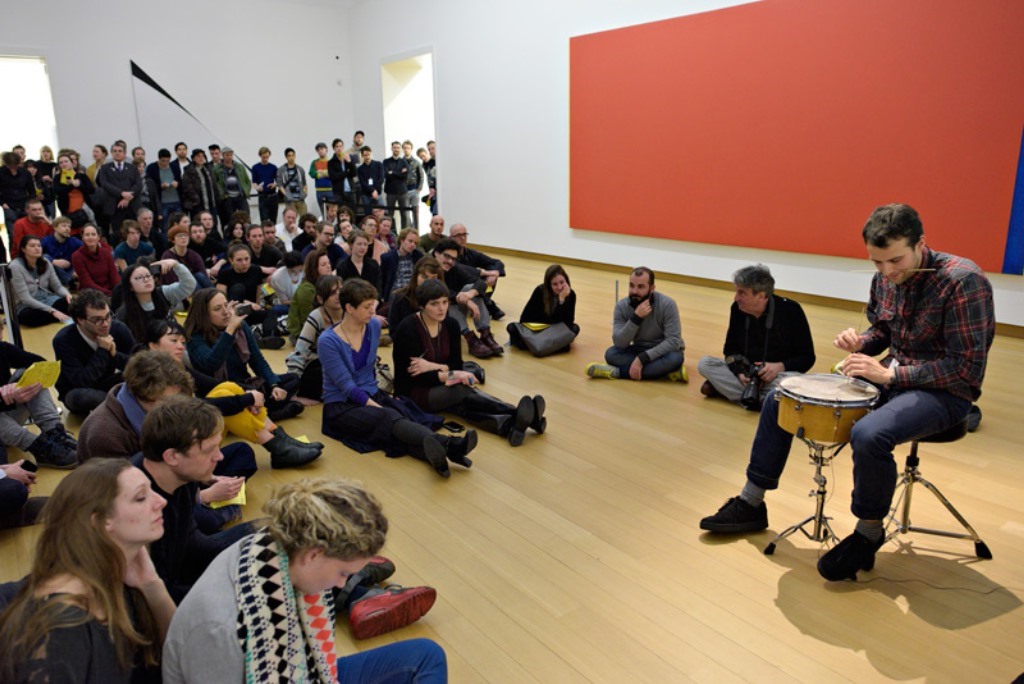
Sonic Acts 2015 The Geologic Imagination
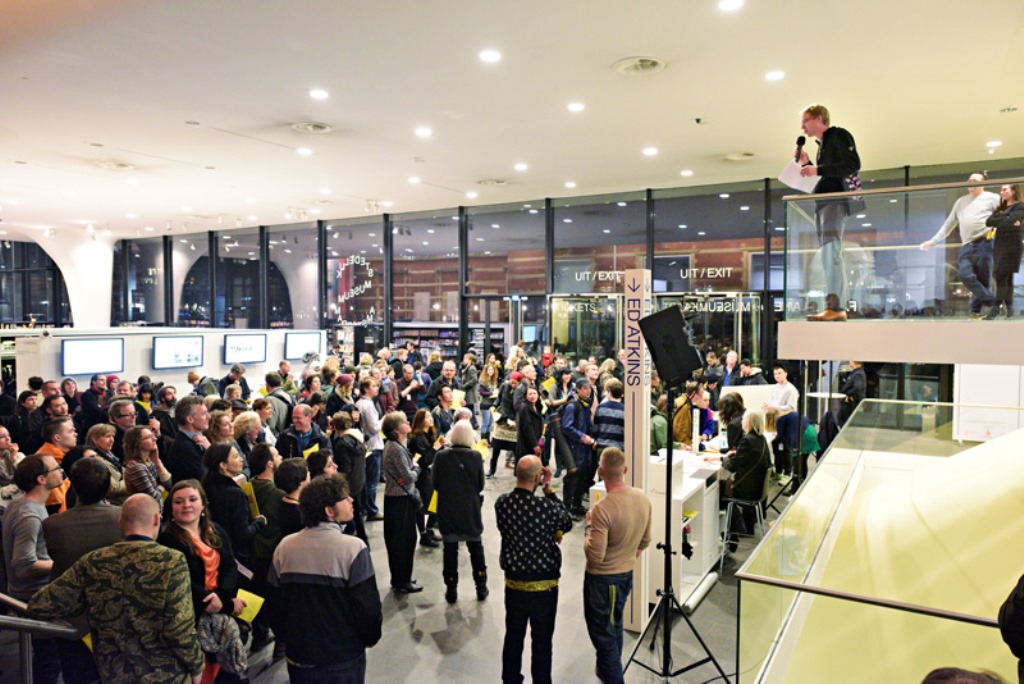
The festive opening of the Sonic Acts Festival 2015 took place at the Stedelijk Museum. And like each opening night was about the celebration. And like most celebrations was about the splendor. A great deal of artists, various sounds, a lot of noise. The museum had been transformed for this time into lively house for experimental sound art and music. A preview of what happens during Sonic Acts and what it is about.
Indicated in 1994 Sonic Acts Festival is an annual event dedicated to interdisciplinary arts. This year’s edition “The Geologic Imagination” touches upon the subject of geoscience and it departs from the thesis that we live now in a new geological epoch: the Anthropocene. By means of variety of symposiums, concerts, exhibitions or screenings, invited artists and theorists reflect on its transformations. Beside the Stedelijk Museum the festival is present in other cultural centers and music venues in the city – Paradiso, OT301 and Muziekgebouw.
The main part of the opening night were performances by various artists that were happening in most cases simultaneously in different locations of the museum, exploring real and synthetic and betrays our senses. It featured the latest audiovisual installation by Kurt Hentschläger, engaging live sets by Gert-Jan Prins and Bas van Koolwijk, Espen Sommer Eide and part wild horses mane on both sides, lecture by Reza Negarestani and a performance-installation by Florian Hecker.
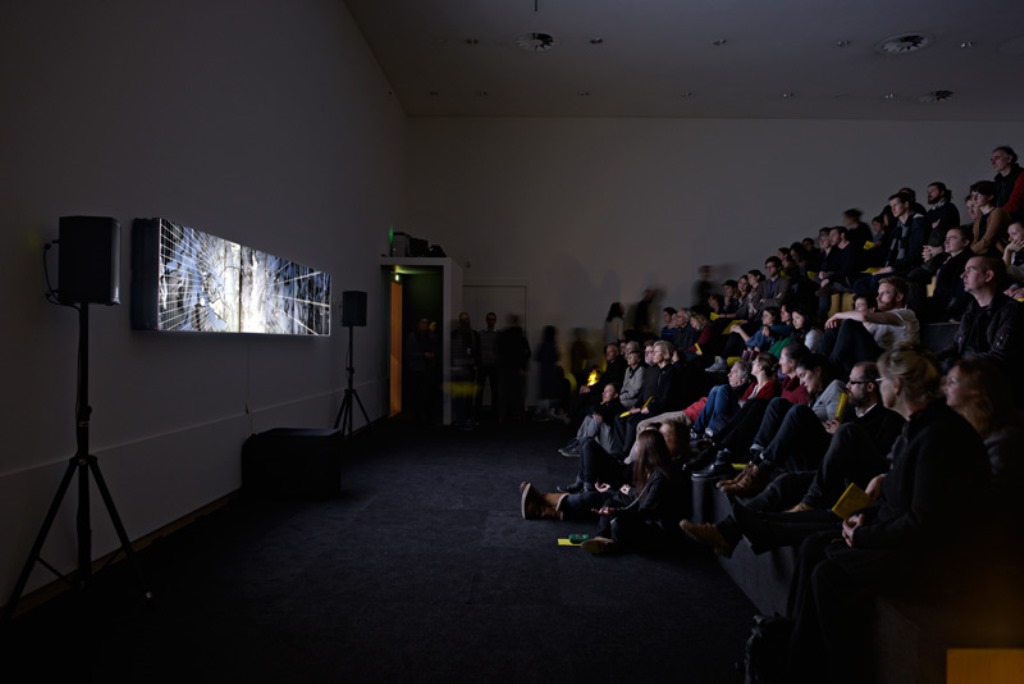
Located in a Cinema Room panoramic projection by Austrian artists Kurt Hentschläger was the only piece that was on view for the whole day. “Measure” reflects on the contemporary concept of nature and its boundaries between mediated and physical experience. The three screens installation was composed of juxtaposed images of Swiss landscape with graphic interferences. Natural smoothly overlaps with artificial. Passing clouds became growing shadows that became spreading grids. The artificiality was pushed by mixing and synthetizing collected sound footage. While its duration the noise intensified, becoming more and more disquieting. But eventually nothing happened, no climax appeared. Trans continued. Although, the mesmeric impression cannot happen without an intimate atmosphere.
In a different tone had introduced the visitors a new live performance by Dutch duo Gert-Jan Prins and Bas van Koolwijk. “Delay Line Memory” hypnotized audience with computer generated projection and improvised sets on drums and digital electronics. This dazzling mix worked surprisingly well within the space of the museum, both in terms of sonic and visual qualities. Infinite rhythmic variations of audible patterns were created through interference between sound waves travelling with divergent frequencies. Generated sounds were visualized as blocks of pixels (projected on a wall) and thus its aesthetic connotes early video-art works.
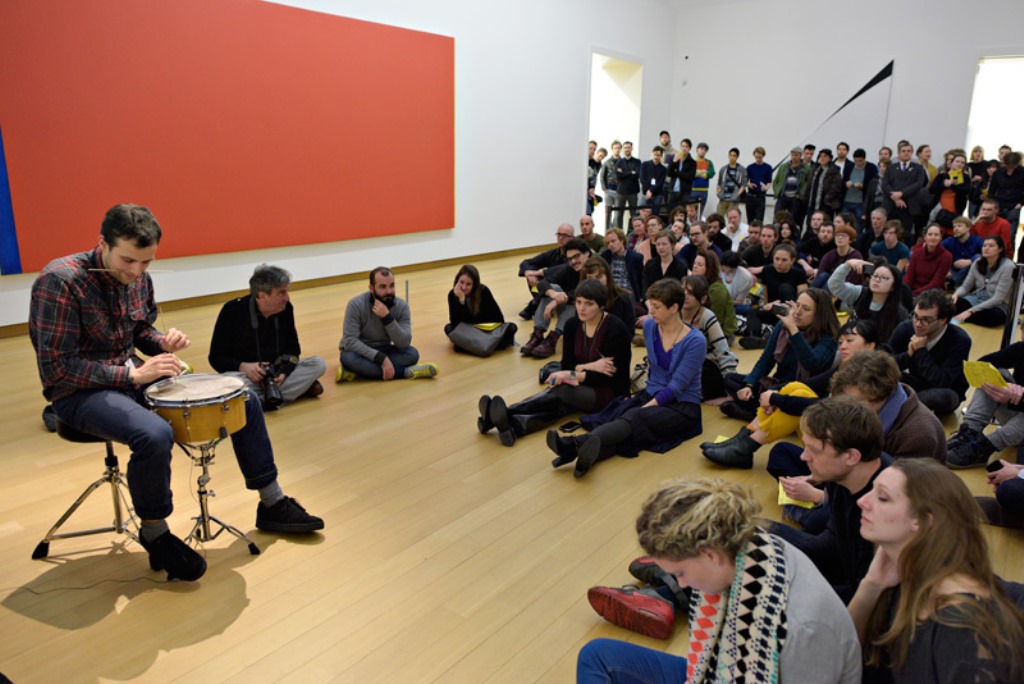
To the historical sources returned also a Norwegian multi-instrumentalist Espen Sommer Eide, constructing new instruments out of his collection of musical tuning systems – from the lurid Norwegian ‘troll tuning’ to relaxing Pythagorean pure mathematical intervals. No wonder then that his table resembled an alchemist’s station: a rock of unknown origin, antique book, weird strings. All together it resulted in an enchanting piece “A Tune Chord is like a Scientific Instrument Probing the Universe” that transformed the central room at the Stedelijk into another universe, beyond the present time. Ritualistic connotation were also sensible in the live improvised set by British duo – part wild horses mane on both sides. Surrounded by minimalistic monochromatic paintings by Barnett Newman they performed a new piece “Kith, Schist; slowing down the time experience”. There was something magical about their music. Seducing flute and sound produced using a stone along with electronic textures create a peculiar mixture that was mystic and contemporary at the same time.
In this environment the lecture by Reza Negarestani – “Geophilosophy after the Copernican Abstract Machine” became another sound piece. The presentation by Iranian philosopher and writer took place at the foyer of the museum – Schiphol Lounge, where naturally all the voices of the passing visitors and Reza’s himself were overlapping. The broadcast on a catastrophe was conducted via skype and transmitted on TV screens, which even increased the art-installation-like setting.
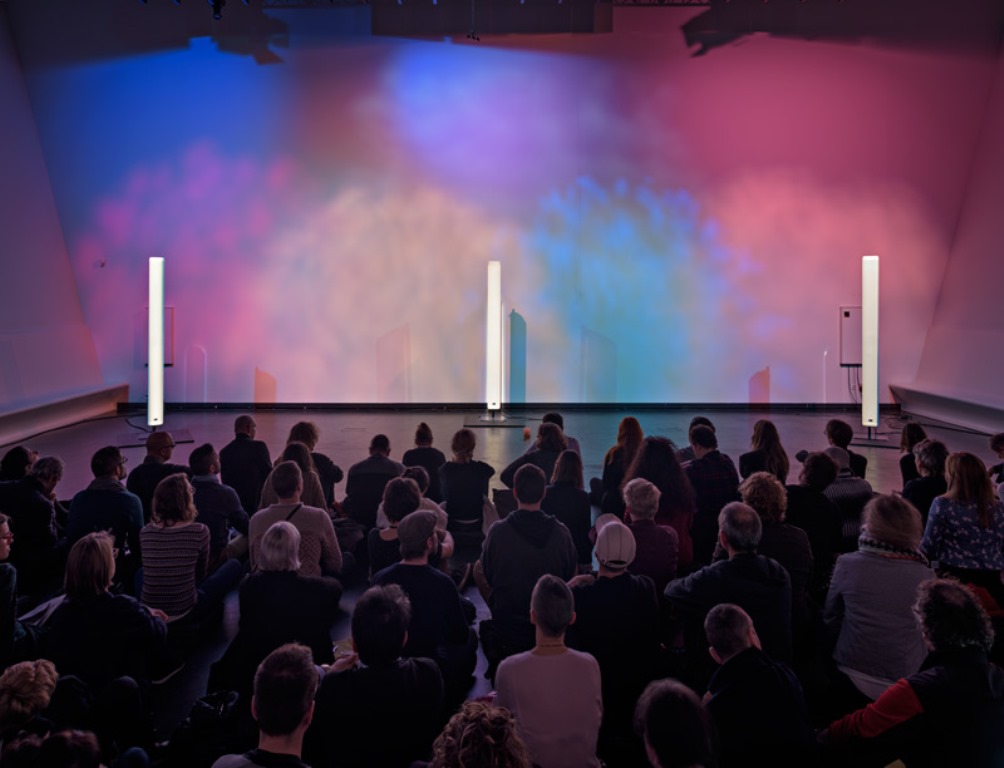
This could be seen unintentionally as an introduction to the undoubtedly considered as the highlight of the evening program – the third chapter of Florian Hecker’s text-sound piece created with Negarestani (author of the libretto). “A Script for Machine Synthesis” was many things: a sound piece, experimental drama, multi-sensory performance and model of abstraction. Taking place at the Teijin Auditorium it’s the only work that could be attend with a special ticket, as the amount of seats was limited. At the entrance the participants were given a booklet with a script and a disc impregnated with a scent, created by Frédéric Malle and Carlos Benaïm. “A cubic chunk of pink, inaccessible to the crowd” recited the voice (Charlotte Rampling) coming out of three high speakers situated on a stage. This strictly imaginary encounter with a pink ice cube was a starting point for linguistic delusions of smell and sound, which gradually becoming self-reflexive. During the show the sound changed into synthetic tones. More and more disturbing it seemed to attack from every direction and made several people to leave. “This game is indeed incomplete without its audience, but it obliges you to observe certain rules and play”. – wrote Robin Mackay in the booklet.
“We live in an engineered world, where cultural product (…) is delivered as a perfectly packaged whole”, he wrote further. Maybe we should take it into consideration and rethink how do we conceive of the world and culture, as the boundaries between natural and artificial, science and culture, engineering and creativity seem no longer exist. And according to the core of the Sonic Acts – the Anthropocene – humanity and nature are one, embedded within the recent geological record.
Sonic Acts 2015
The Geologic Imagination
Amsterdam
26.2 – 1.3.2015
Opening Sonic Acts Festival 2015 in Stedelijk Museum Amsterdam
Photo: Pieter Kers
MORE ON THE ANTHROPOCENE:
Metropolis M No 1-2015 WORLD OF INTERIORS & ANTROPOCEEN. OUT NOW
The Anthropocene Observatory. BAK Utrecht, 07.02.–26.04.2015
Weronika Trojanska
is an artist and art writer


